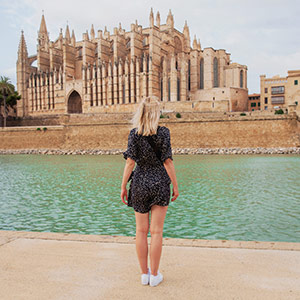
Montaña Palentina Natural Park

The rugged source of the Carrión and Pisuerga rivers
This natural space is located in the province of Palencia and borders the province of Leon (both part of the region of Castile and Leon) and the region of Cantabria. It boasts an immense mountain range, with peaks of more than 2,500 metres high, and huge cliffs and deep valleys that harbour glacial lakes.
Montaña Palentina Natural Park
Park House
C/ El Plantío, s/n
34840 Cervera de Pisuerga, Palencia (Castilla y Leon)
Palencia (Castilla y Leon):
- Aguilar de Campoo
- Brañosera
- Castrejón de la Peña
- Dehesa de Montejo
- Palencia
- Pernía, La
- Polentinos
- San Cebrián de Mudá
- Triollo
- Velilla del Río Carrión
Activa JS
What you need to know
-
Cultural information
The area where the park is located, in northern Palencia, is home to one of the most important collections of Romanesque art in the world. Specifically, the well-known Palentino Romanesque Route begins in the city of Palencia, showcasing the rich medieval heritage that developed in the area around the Camino de Santiago, with more than fifty buildings still preserved intact.
-
Environmental information
The park has enormous natural, scenic, faunal and botanical value. In terms of fauna, it stands out as a refuge for the brown bear, but you can also find wolves, deer, otters, etc. Regarding vegetation, there are abundant birch, beech, oak and holm oak groves. Regarding the relief, it is made up of hard, dense mountain limestone.
-
Information for visits
Access to the Park may be restricted between February and June due to the brown bear breeding season; it is best to check before visiting the Park during these months.Casa del Parque can be found in Cervera de Pisuerga, a spot where visitors can obtain all information they need about the area. It is only an hour and a half away from Santander Airport, to the north, taking the A-67 and the CL-626 from there to get to Cervera. To get there from the south, from Palencia, take the same A-67 and then the P-227. For information, you can also visit the tourist offices in the municipalities surrounding the area.


